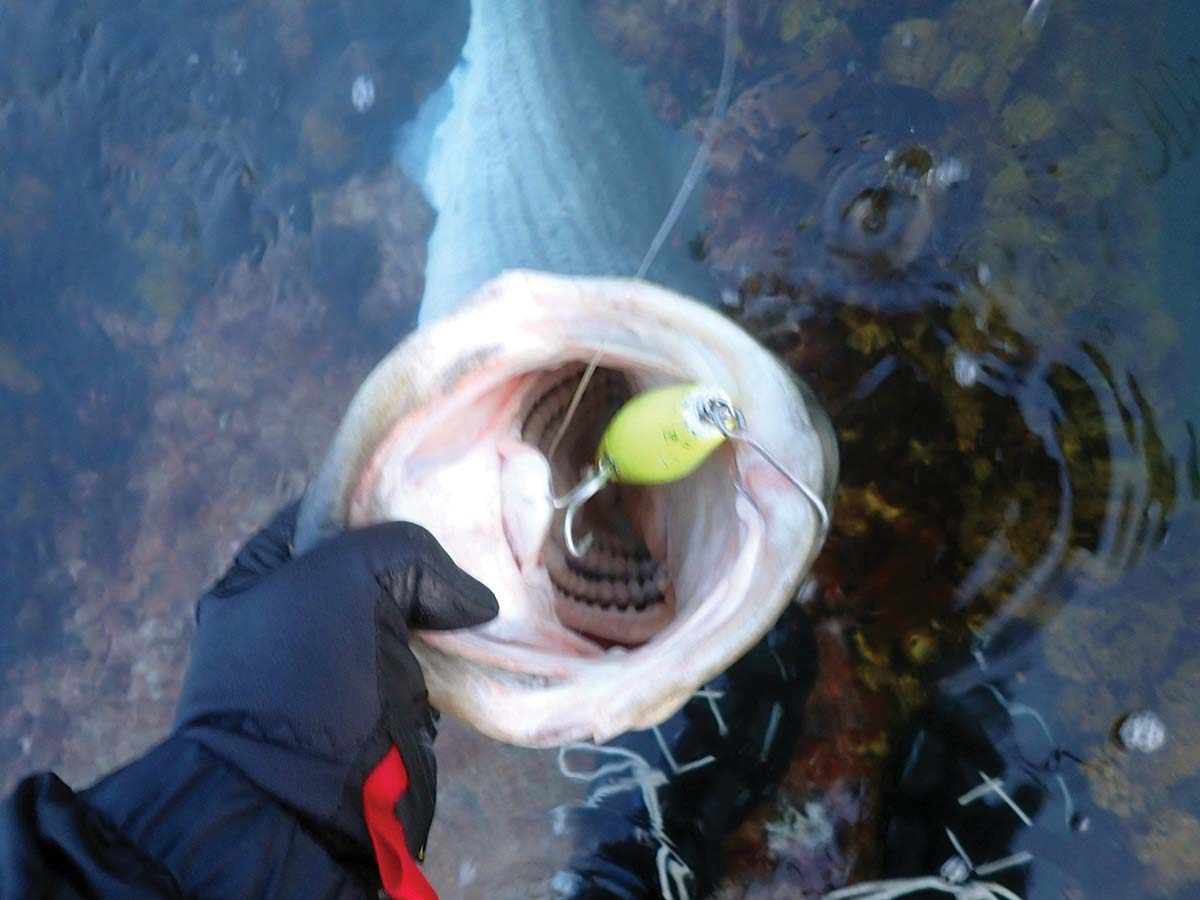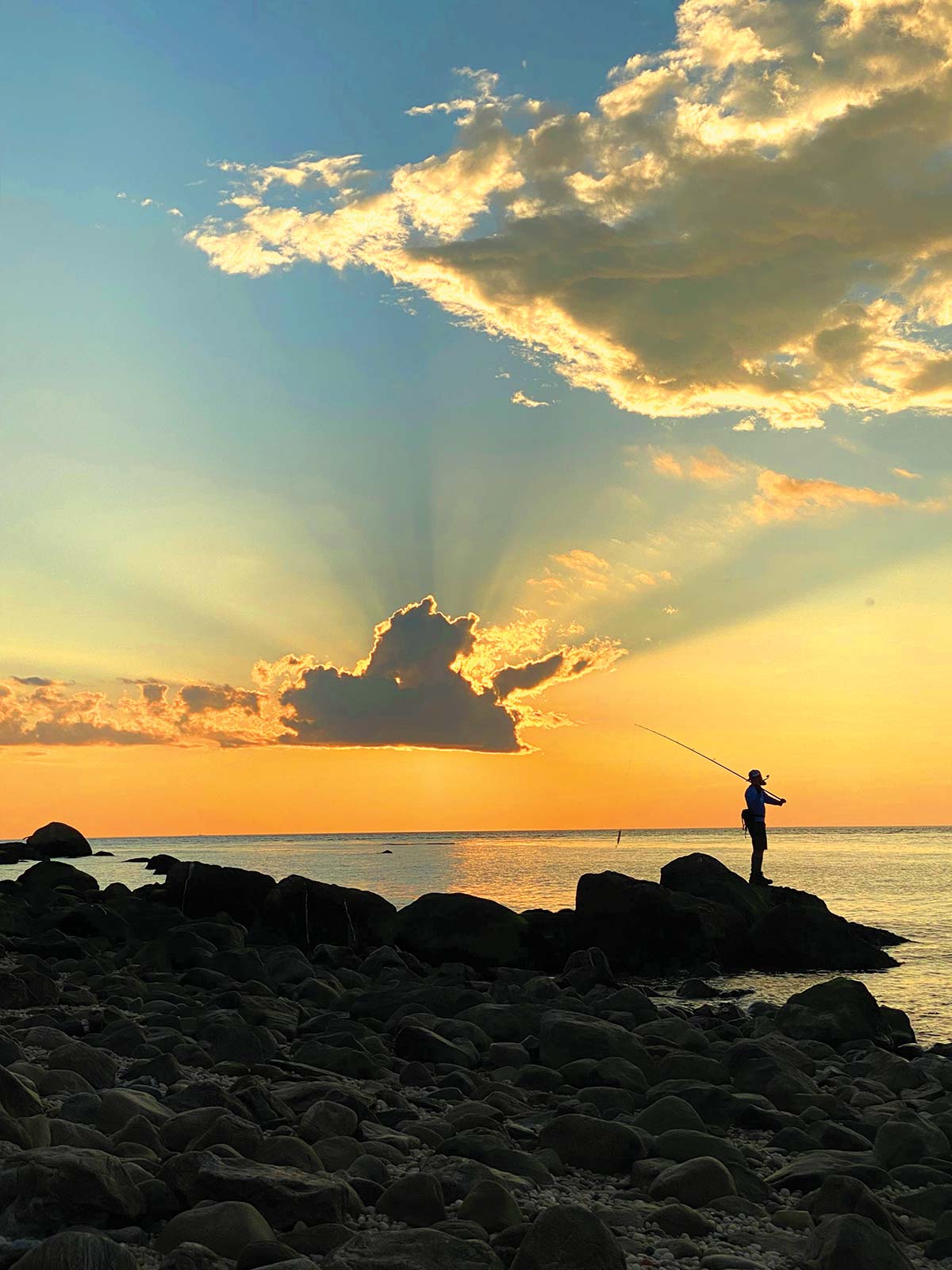
A tournament winner talks about what won him a recent surf tournament.
Amongst your typical “night shift” surfcasters and wetsuiters, fishing daylight and throwing pencils or top waters tend not to be common practice. However, it could very well be one of the most underrated methods for targeting big fish. Even for myself, the routine was always waiting until the last light to hit the surf and calling it a trip right before the first light hits.
When targeting big fish from shore, it becomes counterintuitive to think of fishing in the light. But a few good sessions over the years has slowly changed my outlook on this type of fishing. In fact, now I think to myself how many amazing bites I might have missed just because I left before it got light out.
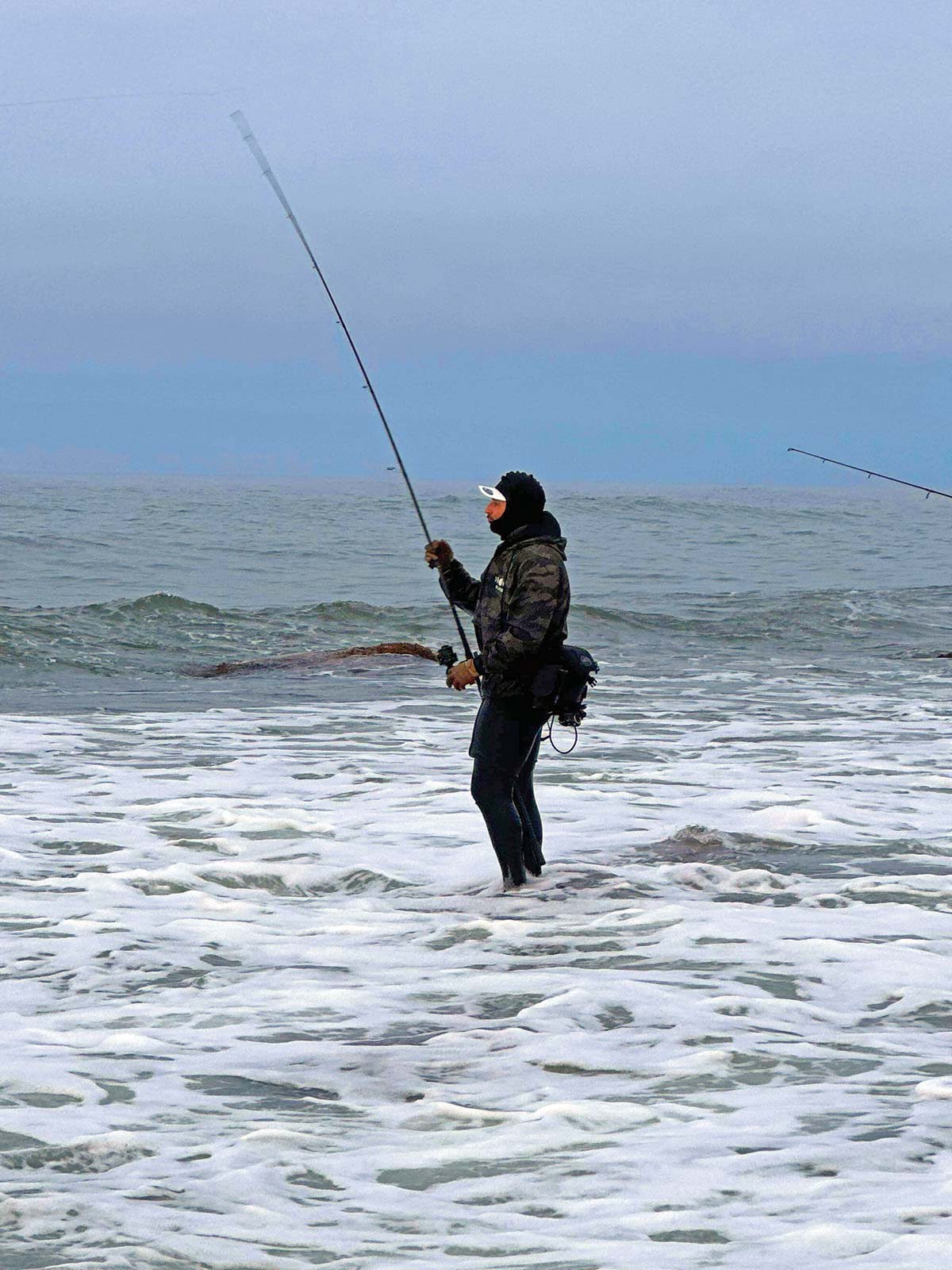
The Pencil “Bite”
Before you start integrating some topwater sessions into your routine, it’s important to understand the type of “bite” you’re going to be looking for. You can’t target big fish in the light if you don’t know what to expect. Yes, you can throw a popper at any sunrise or sunset and hit a fish or two hanging around the rocks or groins — maybe a “rat” or perhaps a blue. But time is valuable, so if I’m going to be passing up night tides and focusing my energy on mostly fishing during these times of the day, I’m looking for more than that. Nonetheless, a pencil bite always has to start somewhere, and it might be with just one or two fish.
One session might consist of a few big blowups and maybe one good fish. That usually can be the beginning of something much more. If the bite is going to develop, it will slowly evolve from there, with more fish and bigger fish with each passing sunrise/sunset. This is especially true if you’re on the front side of a new or full moon leading up to it. Once you realize you’re onto something, it’s important to get dialed in and expand your time on the water. Go a little earlier, stay a little later, investigate what’s developing, and lock in on the specifics of the bite. Are the biggest fish coming through first? Are they hitting last? Are they far out or closer in? Are they clustered on the left side of a reef or the right? All this fine-tuning will give you a huge advantage as the days go on, and more people start to show up. By the time casters usually find out about something I’m onto, I’ve already been dialed in for a week and know exactly where and how to approach each tide and will usually be pulling the most and biggest fish.
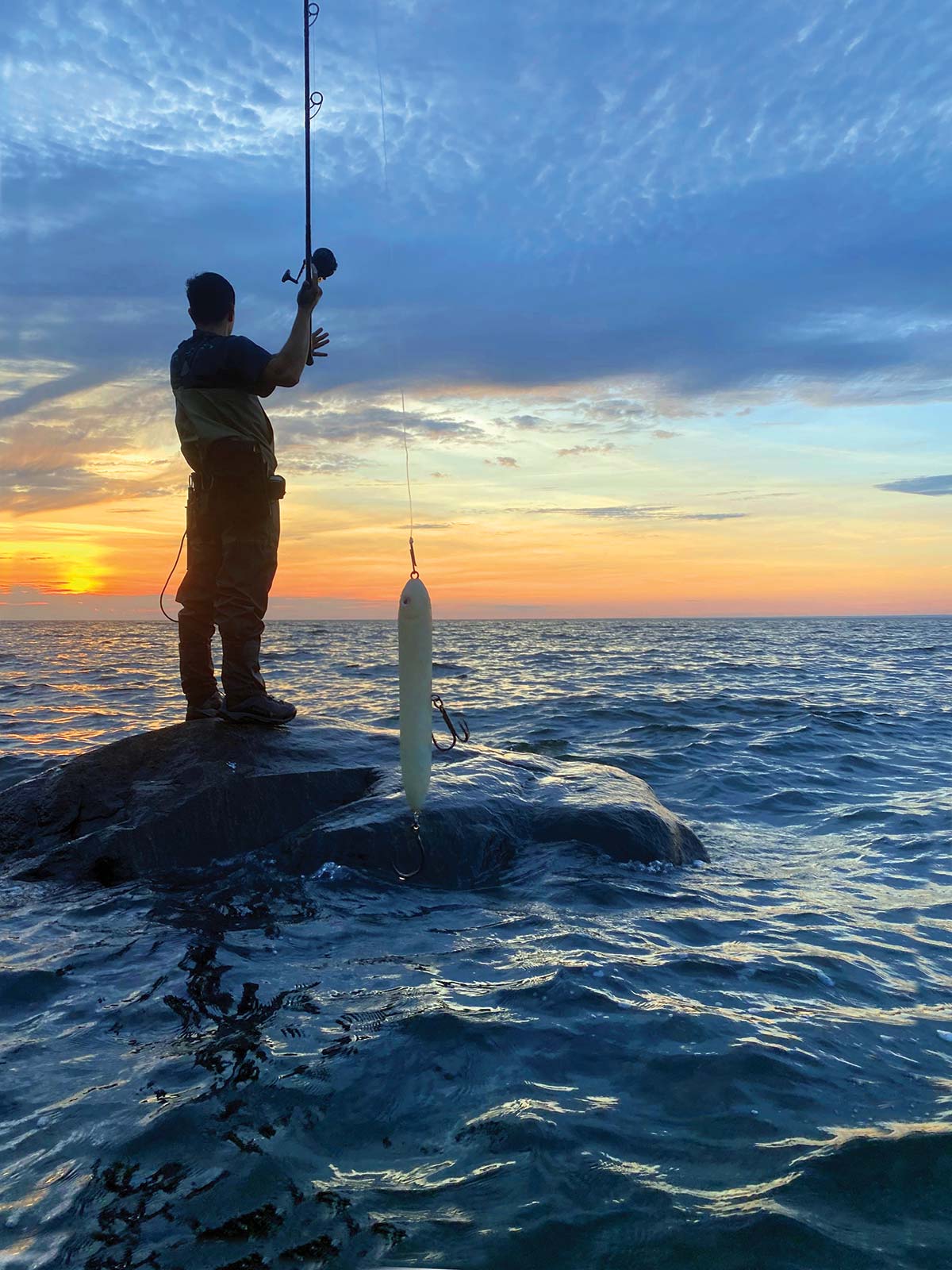
In a general sense, as far as windows of action go, it’s important to note that the bite is going to usually be time-oriented as opposed to tide-oriented. The fish will usually roll through at the same time regardless of the tide. For instance, it might start as a low incoming bite and end as a high outgoing bite. As long as you’ve got current and similar enough conditions, the fish will still be there roughly on time. Since this is the case, however, you might only get tight windows of action. The sunrise bite window usually is around the first light, and the sunset bite window usually starts before the official sunset and lasts maybe 30 minutes after. In my experience, in cases where there’s really crazy sunrise/ sunset popper action, the night tides might only yield minimal fish or smaller fish.
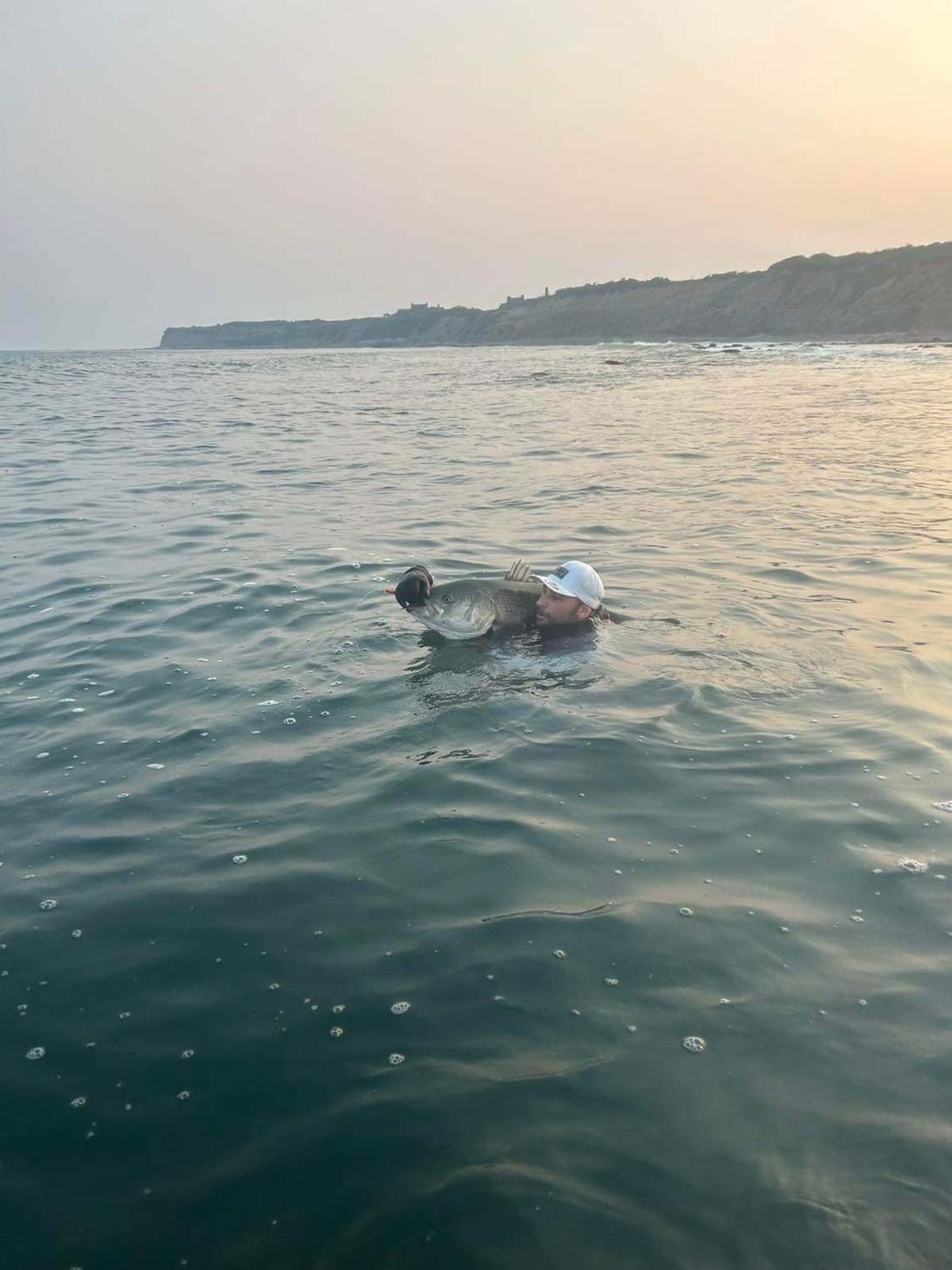
Plug Selection
Once you’ve got an idea of the action you’re expecting and the pattern you’re looking for, it’s important to make sure you’ve got the right gear. As far as your terminal tackle, the general setup used for targeting bass in the rocks will suffice. I go with 50-pound braid as my main line with a 3-foot plus leader of 80-pound monofilament tied to a 175-pound Tactical Anglers clip.
For plug selection, there are various types of different topwater, but in my experience, a big pencil popper is the go-to for trophy bass on top. Pencils also then come in a variety of shapes, styles, weights, sinking vs. floating, wood vs. plastic, etc.; thus, it can be overwhelming. In general, if you’re fishing reefs that can be shallow in some spots, a floating pencil is going to be the move. I prefer a long 7-inch plus 3-ounce plus popper made from wood. I feel they often cast further than most of the plastic makes. However, it’s important to note the woods won’t hold up as well to bluefish as some plastics will. As far as shape, I like a bowling pin style, skinny by the head and gradually larger by the end but with a uniform round bottom. As far as distance is concerned, it’s important to experiment with different builders and different shapes to see which cast the furthest because oftentimes, how far you get out can be one of the most important factors, if not the deciding factor, for success in a topwater bite. Any plugs that consistently wobble midair or have a tendency to sometimes cast sideways is a no-go for me. I want to be able to send my pencil basically into orbit with consistency, bombing it out to the deepest water I can find.
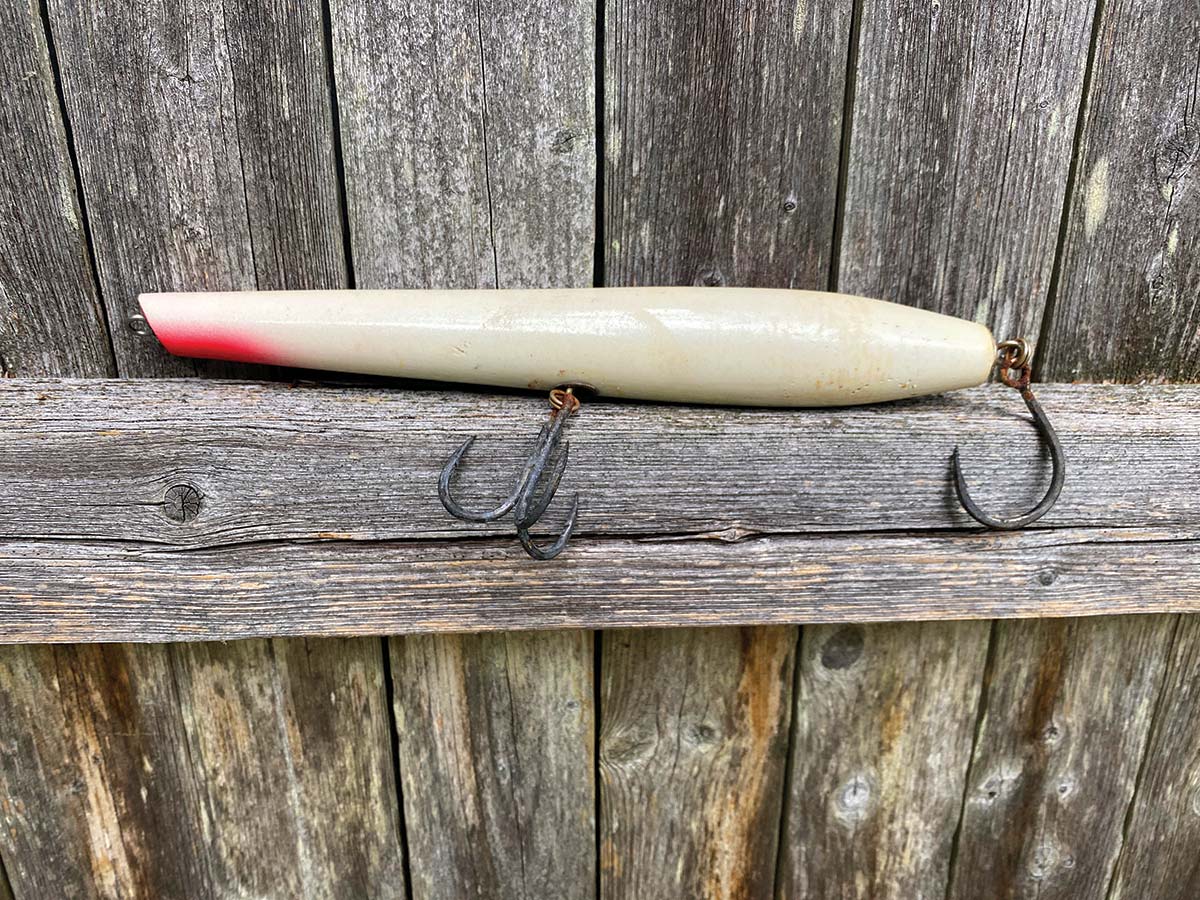
Regarding specific builders, I like FishLI’s floating pencils and also Big Fischers — both are wood. Lastly, for hook selection, I have no problem going big, as I haven’t noticed any effect on action. A 4/0 or larger BKK Viper treble for the middle hook and a single Lone Diablo hook on the back. The 4/0 Lone Diablo hook from BKK is a very strong, durable hook perfect for this. Some guys will run trebles in the middle and back, but I’ve noticed the highest hookup and landed fish ratios with treble in the middle and single in the back.
Slow And Steady Wins
Retrieve style and speed is another important factor when fishing pencil poppers for trophy bass. There’s a common misconception about retrieve speed with this style of fishing. At first glance, you see a lot of guys violently whipping their rods back and forth in a way that implies a fast, aggressive retrieve, but that isn’t the case. Just like when you’re targeting big bass with many other types of plugs, the key is slow and steady. The rhythmic back-and-forth “dancing” action comes from the rod, not the reel. You want to hold the rod a foot or so up from your reel seat and whip it forward and back while simultaneously reeling as slowly as possible. So what you get is a pencil dancing violently back and forth on top of the water but slowly and steadily being taken forward to your rock. This dead slow retrieve style will not only produce more fish, it will usually cull out the bigger ones.
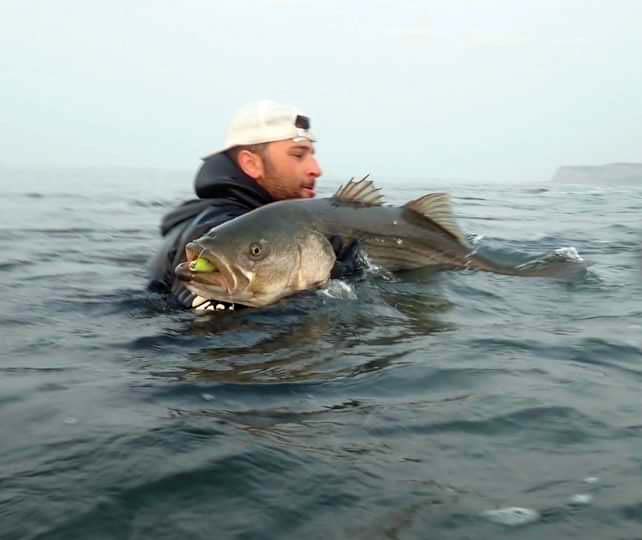
Another important point to note is to make sure you are casting up the current like with any other plug and working the pencil with the current. Casting down current and working a pencil against the current makes for a poor retrieve and usually less action unless the fish are strictly only set up to your left or right (down current), then you make do. Additionally, when the big blowups do come, it’s important not to panic or change anything up. Don’t stop your retrieve, and don’t alter your rhythm. Many times big fish will either miss your popper, be whacking it to “stun” it as it would a baitfish, or just be exploring what it is. Regardless, when you stay the course and continue your retrieve as if nothing happened, a lot of times, you’ll get the proper hookup shortly after. I’ve had 30 to 40-pound fish follow and blow up on my pencil just feet from my feet, so close that continuing the retrieve meant just circling my plug around the rock where I was standing.
While the night tide grind is common practice for big bass, don’t sleep on throwing topwater in the light. Maybe the nights have been slow; maybe you got out earlier than usual, or maybe you noticed a lot of surface activity. Whatever the reason you find yourself in the surf during daylight hours throwing pencils, approach it like any other big bass mission. Don’t just go through the motions passing the time, expecting small fish or spotty action. Fish it with the same tenacity as you would when targeting trophies at night because, simply put, big fish like big, slow, easy bait on top during critical low-light windows. When you finally find that pencil “bite,” it could just end up producing the biggest fish of your life.
